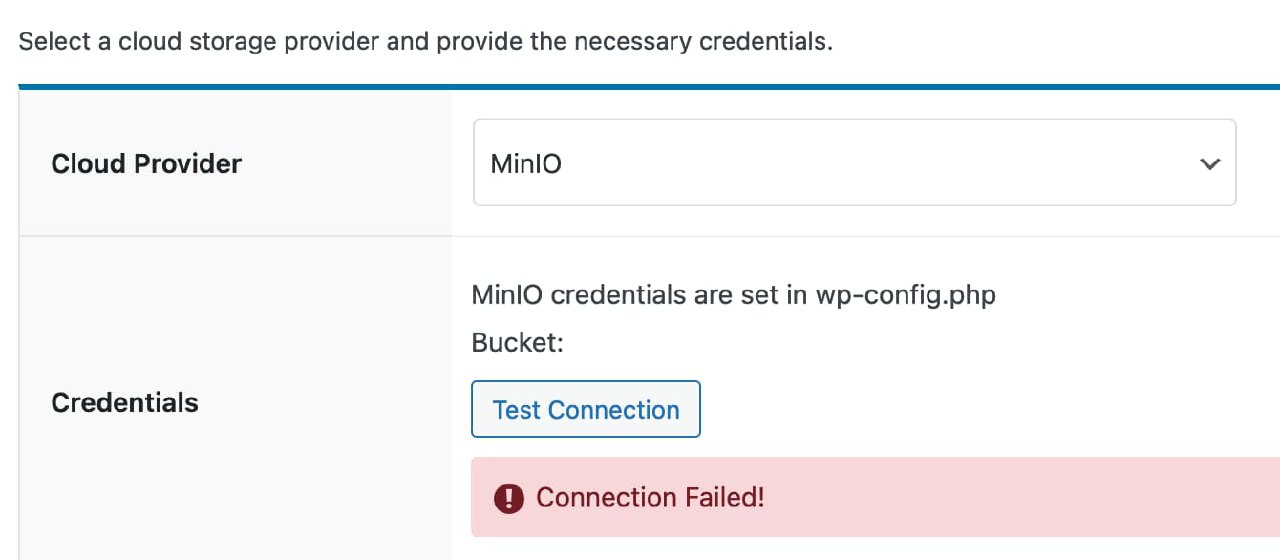May I ask if there is a Paid version of this plugin since it says “Added bulk offload feature for media files (50 per batch in free version)”?
Thank you
]]>I understand PHP 7.4 is obsolete, however may I ask if this plugin contains PHP code which isn’t working on particular PHP version 7.4, or something else?
Thank you
]]>in config file I define
define ‘ADVMO_MINIO_BUCKET’, ‘wp-videos’
define ‘ADVMO_MINIO_ENDPOINT’, ‘https://miniorc.system.com:9000/
but in wordpress send me a error
Advanced Media Offloader: Error checking connection to S3: Error executing “HeadBucket” on https://wp-videos.miniorc.system.com:9000;
put my bucket first
]]>“Rewrites URLs for media files to serve them directly from cloud storage.”
Hi I use Imagify to serve webp or avif images using <picture> tag not through .htaccess
I just need an offload plugin that will upload those files the media library to S3.
How does Advanced Media Offloader rewrite urls? Is it via .htacces file?

I can’t connect to MinIO.
I use cyberduck to connect to this minio and it works fine.
]]>Hi there,
I recently installed your plugin and set it up with my Digital Ocean Space bucket. However, I noticed there’s no option to specify the bucket path for uploaded media files. Ideally, I’d like the files to be stored in an existing folder structure, like:
https://example.sgp1.digitaloceanspaces.com/wp-content/uploads/2024/09/example.jpg
Instead, the current system automatically uploads files by creating a new folder, resulting in a path like:
https://example.sgp1.digitaloceanspaces.com/2024/09/example.jpg
It would be incredibly helpful if you could add an option to set a prefix for the bucket path, as well as an option to add the year and month to the path. This would allow us to maintain consistency and continue using our existing folder structure.

Additionally, I’d love to see a feature that can rewrite URLs to replace local links with the S3 bucket links.
Your plugin has great potential and, with these features, it could easily compete with other offload plugins out there. You’ve done a fantastic job so far!
Thanks again.
]]>I think when a user uploads files, nothing should be done at this stage by default, as it heavily affects user experience (for example, if I upload 10 files, the completion speed for all will be quite slow).
After the file is uploaded, transfer it to R2 (using wp-cron, for instance). You could create a form for the user to set the wp-cron execution time, especially if the user utilizes image compression or similar methods.
Once the files are transferred to R2, update the image links within the post (using save_post, for example).
There should be an option to permanently delete the original file after successfully uploading it to R2.
]]>Hi,
New with this and wanted to know once all the files are uploaded to R2 – can i delete the local files?
Also once the files are offloaded to CF R2, does this mean that it will also update the image URLs?
]]>